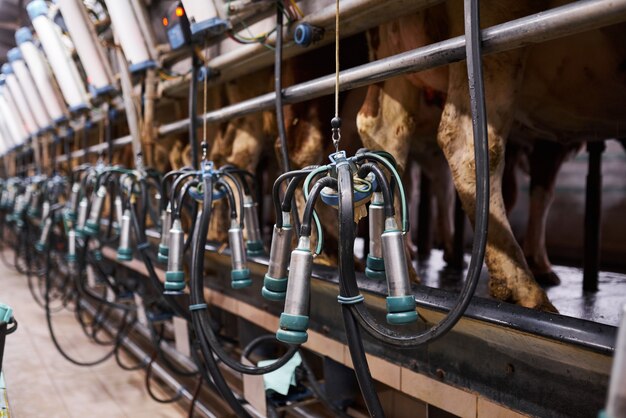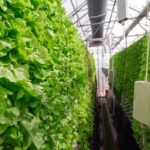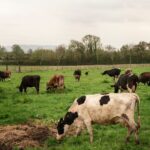Starting a dairy farm can be a profitable venture if done with proper planning and investment in modern milking parlors and equipment. South African farmers, particularly those in regions with favorable climates for dairy farming, can benefit from the growing demand for milk and dairy products. Here’s a comprehensive guide on how to establish a successful dairy farm with the right infrastructure and tools.
1. Plan Your Dairy Farm
Begin with a well-structured business plan that outlines your goals, budget, and target market. Consider the following:
- Scale of Operation: Decide whether to start small with 10-20 cows or invest in a large-scale farm.
- Dairy Breed: Choose high-yielding dairy breeds like Holstein-Friesian, Jersey, or Ayrshire, depending on your climate and milk production goals.
- Market Research: Understand local demand for milk, cheese, and other dairy products.
2. Secure Land and Housing for Cattle
Choose land with good access to water, suitable soil for growing fodder, and proximity to markets. Construct proper housing facilities to ensure the comfort and health of your cattle:
- Open Sheds: Ideal for warm climates; allow free movement of animals.
- Tie Stalls or Free-Stall Barns: Provide individual space for each cow to rest.
- Ventilation: Ensure proper air circulation to prevent heat stress and maintain hygiene.
3. Invest in Milking Parlors
A milking parlor is a central component of any modern dairy farm, ensuring efficient and hygienic milk collection. The most common types include:
- Herringbone Parlors: Cows stand in a diagonal line, offering good visibility and ease of milking.
- Parallel Parlors: Cows stand side-by-side, maximizing space utilization.
- Rotary Parlors: Best for large-scale operations; cows are milked on a rotating platform.
Choose a parlor based on the number of cows, labor availability, and budget.
4. Install Proper Dairy Equipment
Investing in the right equipment enhances productivity and ensures milk quality. Essential equipment includes:
- Milking Machines: Automate the milking process, reducing labor and maintaining hygiene.
- Cooling Tanks: Store milk at the correct temperature to preserve freshness.
- Feed Mixers: Prepare balanced diets for your cattle.
- Manure Handling Systems: Maintain cleanliness and manage waste efficiently.
- Water Troughs: Provide clean drinking water to keep cows hydrated.
5. Focus on Cattle Nutrition and Health
Healthy cows produce more milk. Ensure a balanced diet that includes:
- Fodder: Grow maize, alfalfa, or Napier grass to provide fresh forage.
- Concentrates: Supplement diets with grain, protein, and mineral-rich feeds.
- Mineral Blocks: Provide essential vitamins and minerals to boost immunity.
Work with a veterinarian to establish a health management plan, including vaccinations and routine check-ups.
6. Implement Milking Procedures
Follow best practices to ensure efficient and hygienic milking:
- Clean and sanitize the milking parlor and equipment before and after use.
- Wash cows’ udders and dry them before attaching the milking machine.
- Ensure proper attachment of milking cups to avoid discomfort and maximize yield.
- Collect milk in sterile containers to prevent contamination.
7. Adopt Waste Management Practices
Effective waste management is crucial for sustainability and hygiene.
- Use manure as organic fertilizer for crops.
- Install biogas plants to convert manure into energy.
- Prevent water contamination by treating waste before disposal.
8. Market Your Dairy Products
Build a customer base for your milk and other dairy products:
- Partner with local retailers, supermarkets, or dairy cooperatives.
- Consider value-added products like cheese, yogurt, or butter to increase profitability.
- Leverage social media and local advertising to promote your products.
9. Ensure Compliance with Regulations
Adhere to South Africa’s dairy farming laws and standards:
- Register your farm with the Department of Agriculture, Land Reform, and Rural Development.
- Maintain proper records of milk production and sales.
- Follow safety and hygiene protocols to meet industry standards.
10. Evaluate and Expand
Monitor your farm’s performance regularly:
- Track milk yield, cow health, and feed costs.
- Invest in technology like herd management software to optimize operations.
- Expand your herd or add value-added products as your business grows.
Starting a dairy farm with milking parlors and proper equipment requires significant investment and planning but offers long-term rewards. By prioritizing cattle health, adopting modern technologies, and adhering to best practices, South African farmers can build profitable and sustainable dairy businesses. With rising demand for quality dairy products, the future of dairy farming in South Africa is bright for those who are prepared to seize the opportunity.
Join 'Farmers Mag' WhatsApp Channel
Get the latest Farming news and tips delivered straight to your WhatsApp
CLICK HERE TO JOIN






